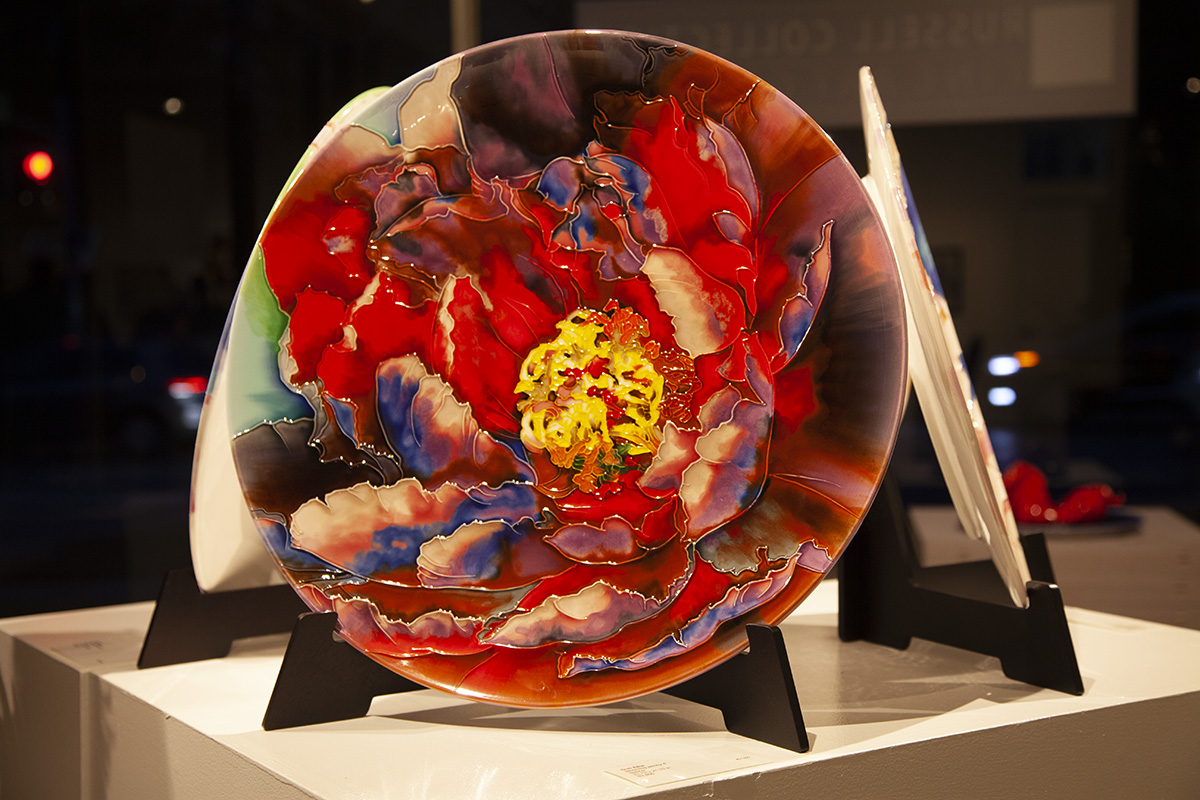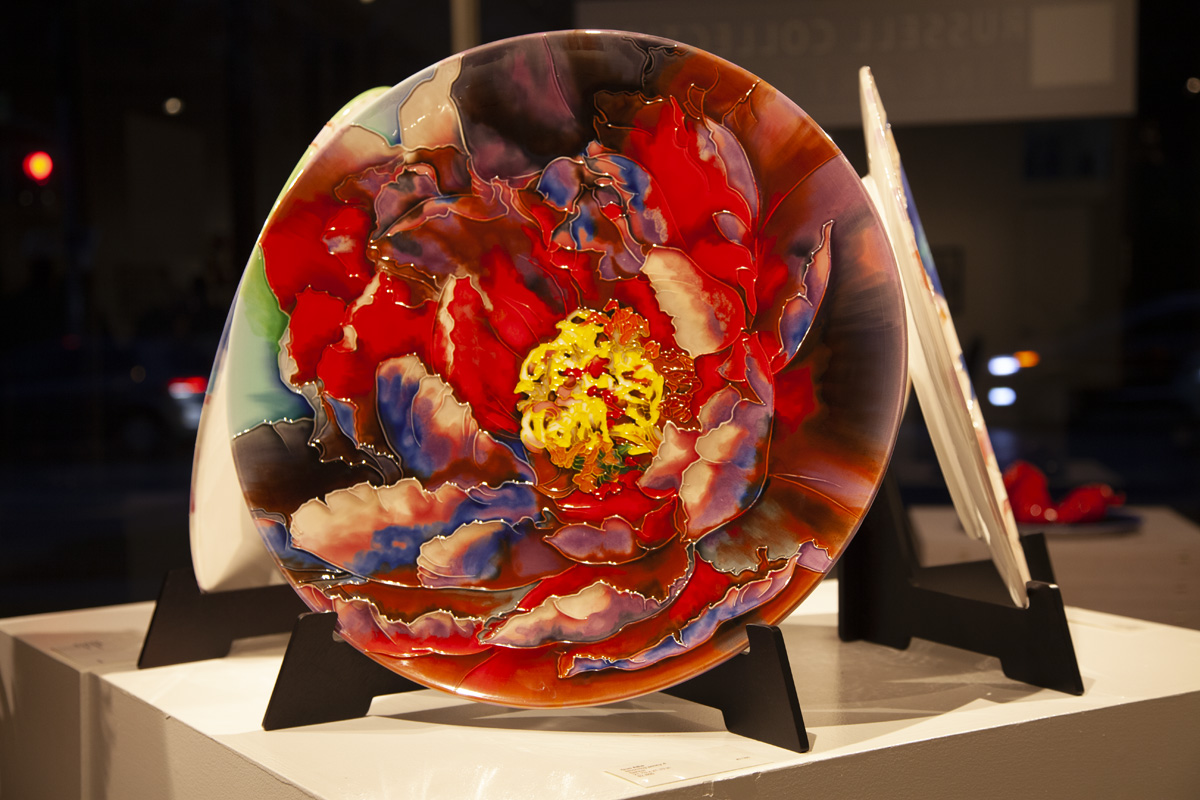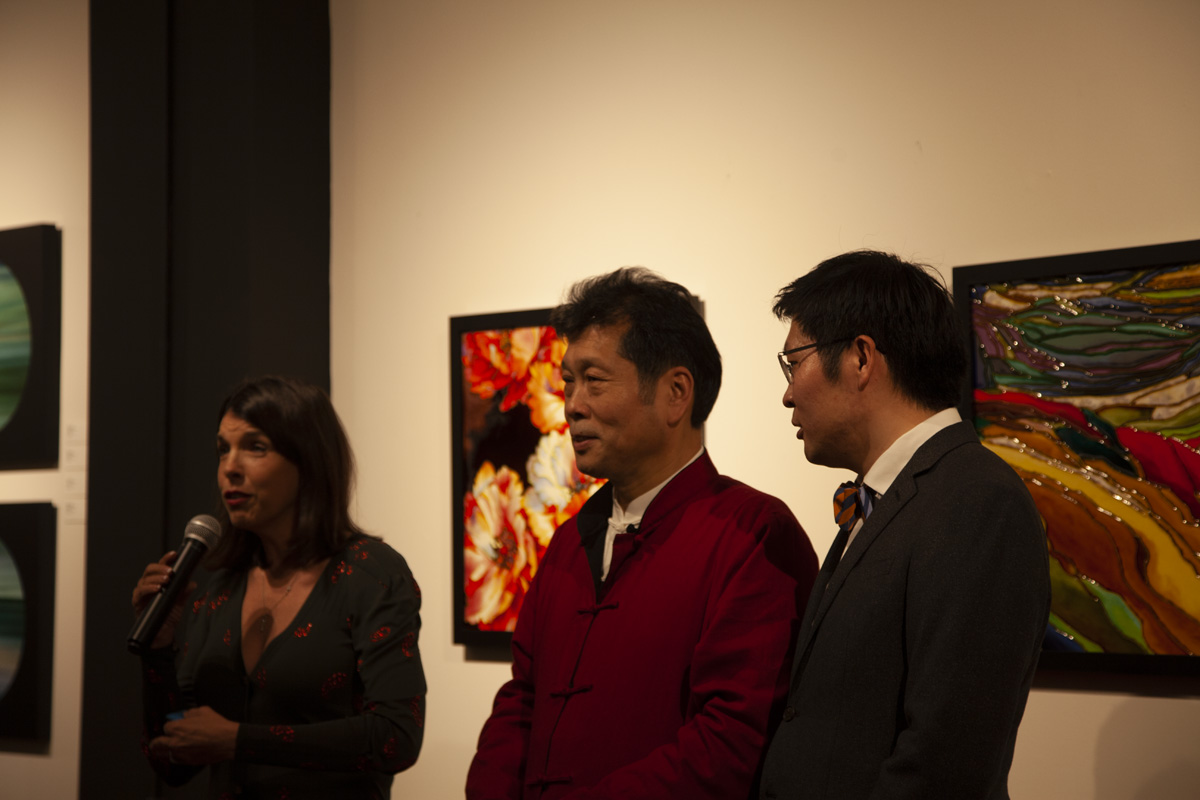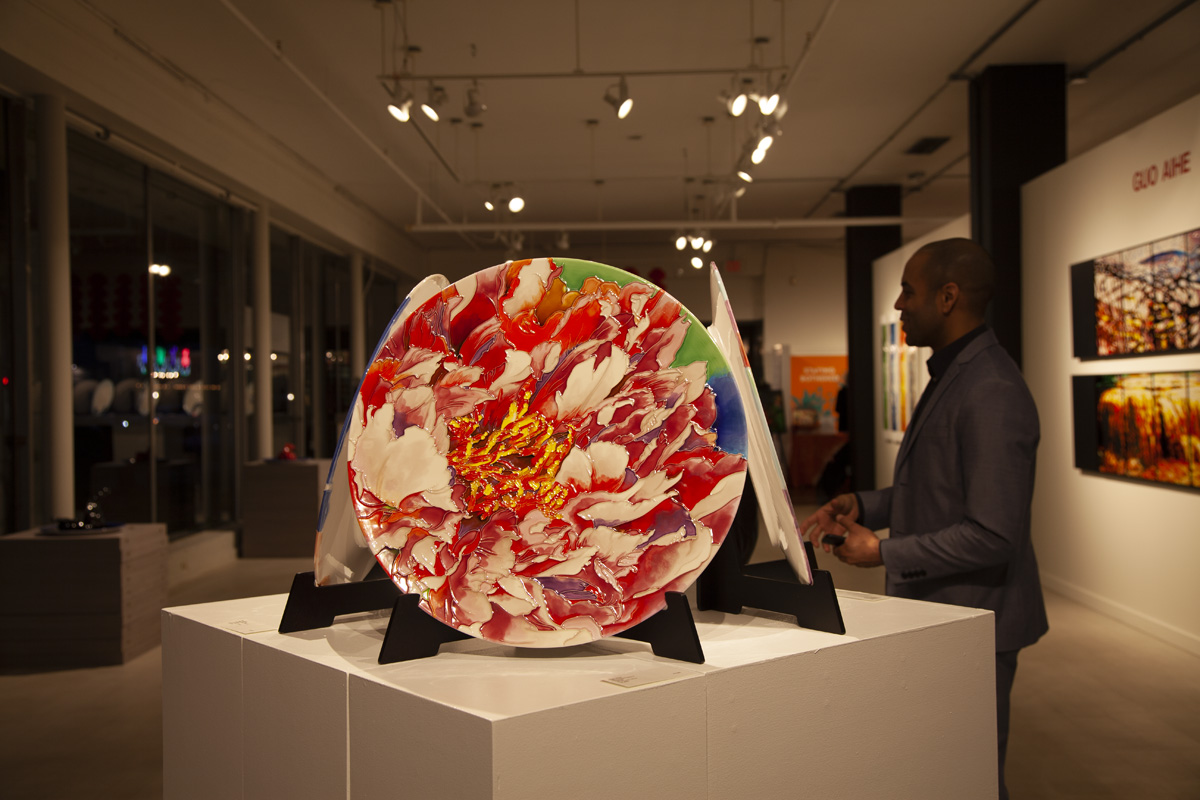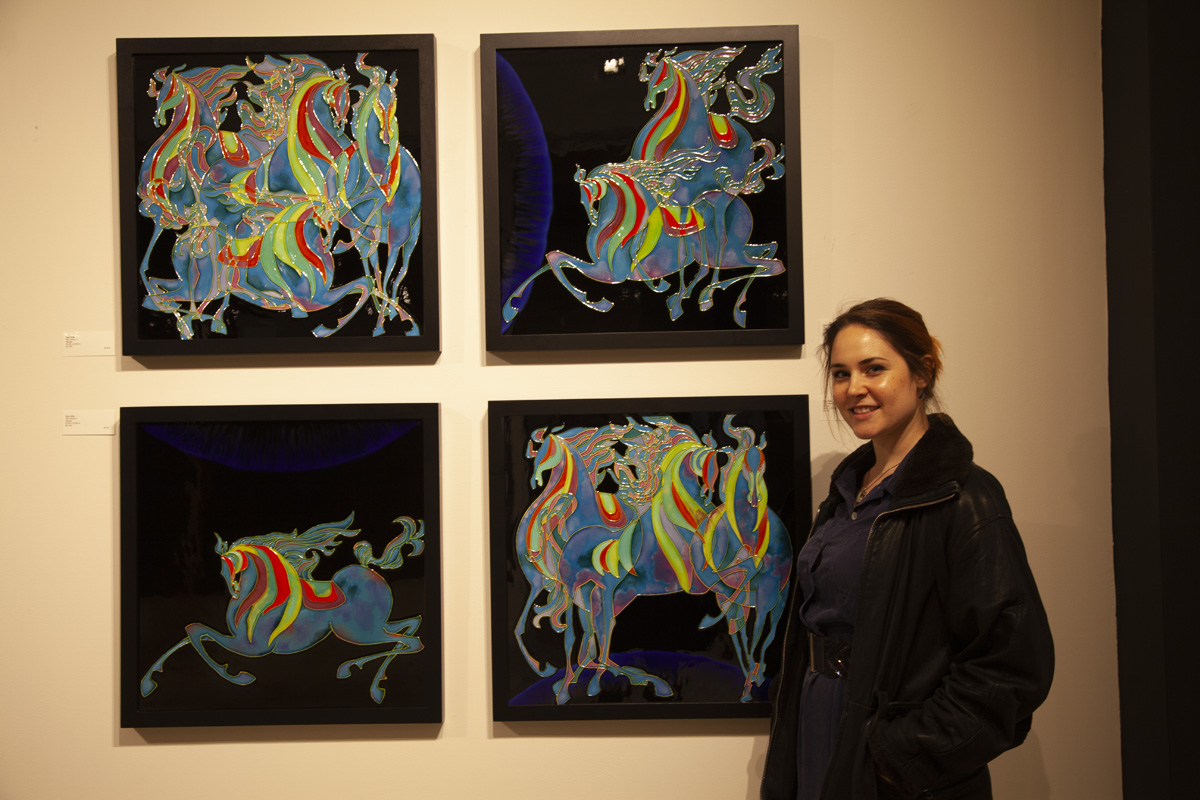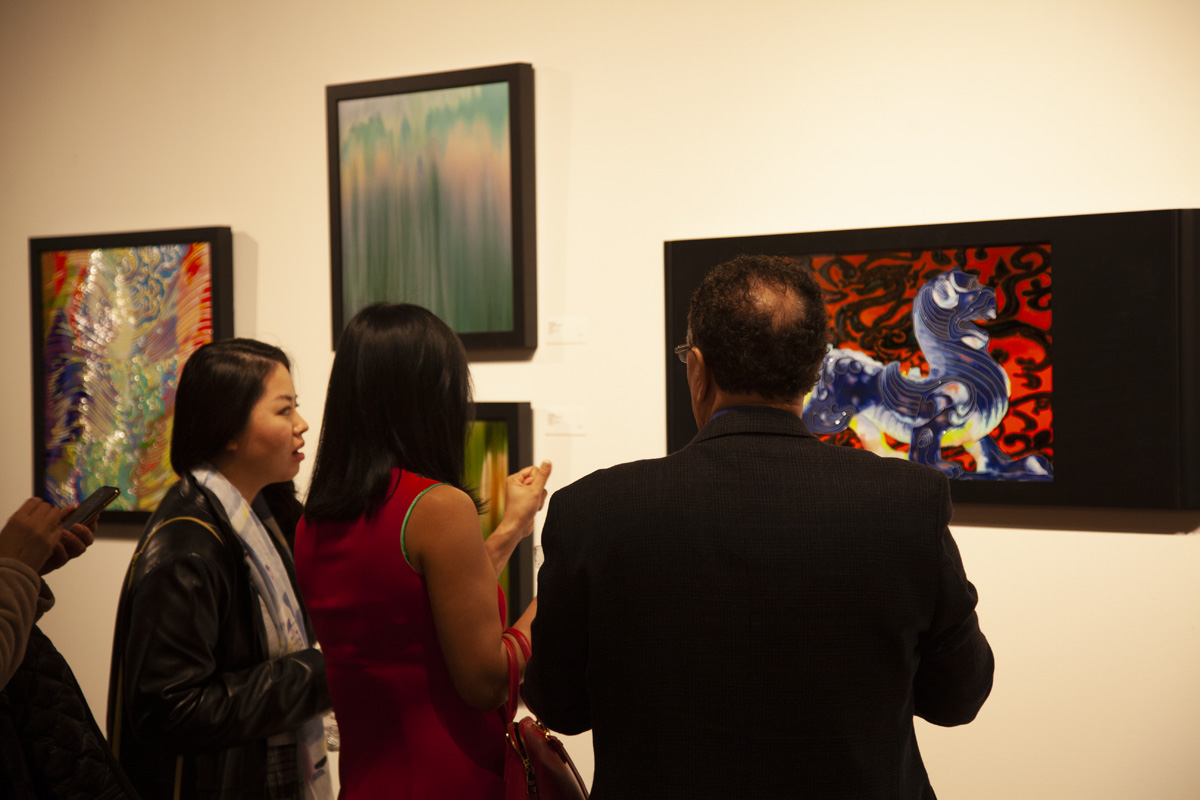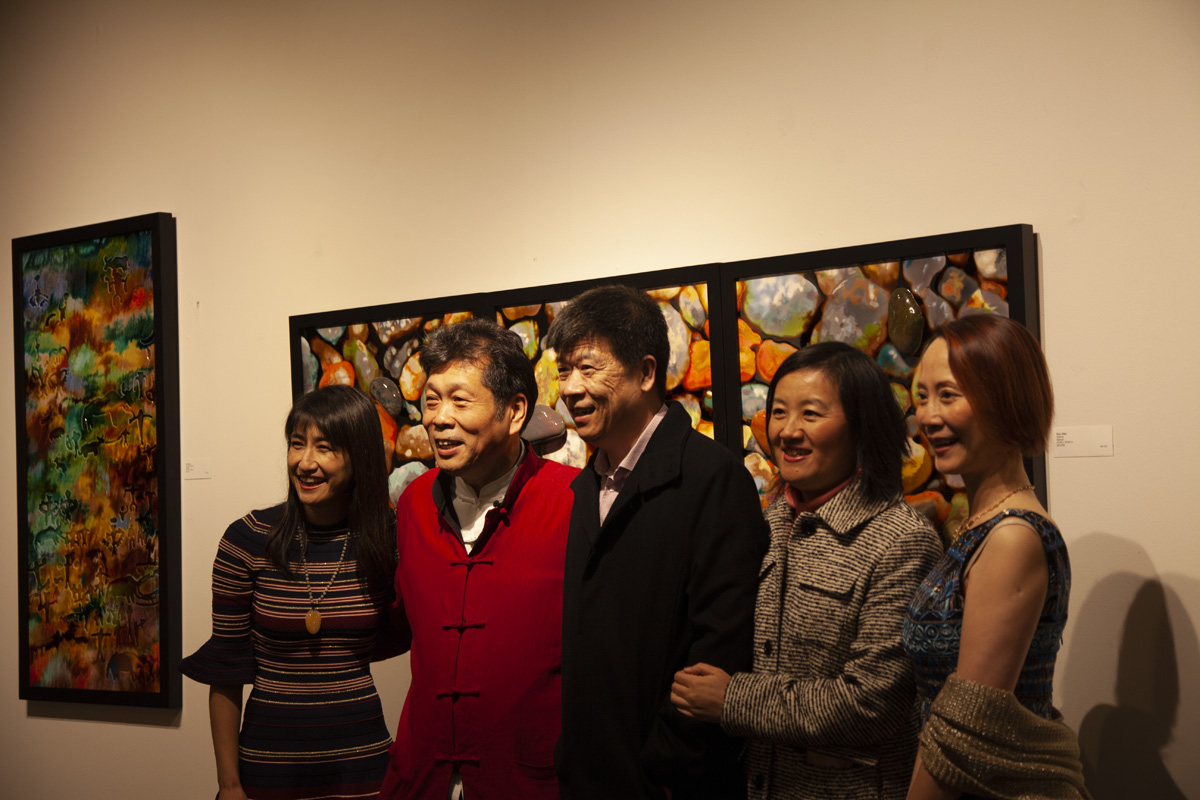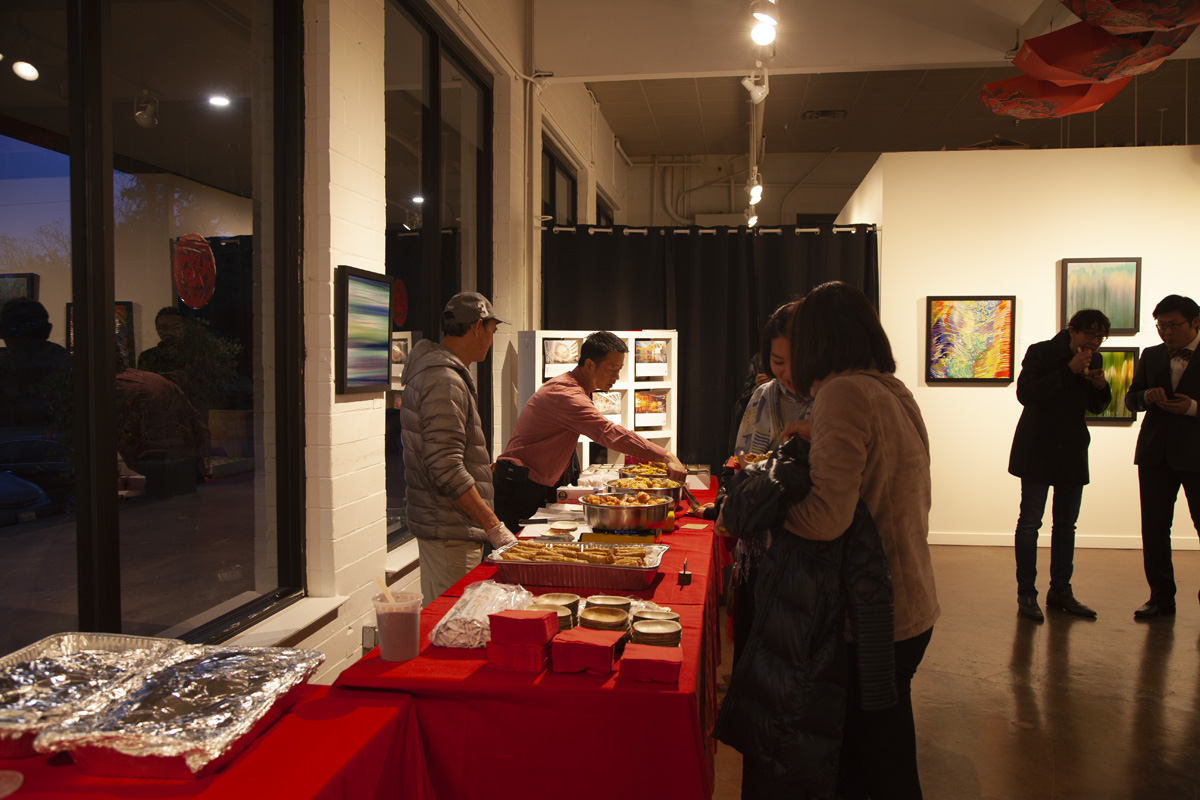2000 FAHRENHEIT: THE EXHIBITION WILL BE AT THE RENOWNED RUSSELL COLLECTION FINE ART GALLERY IN AUSTIN, TEXAS FROM FEBRUARY 9th-28th
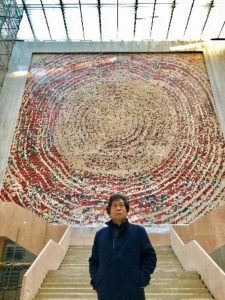
Guo Aihe’s Art 2000 Fahrenheit exhibit kicked off February 9th at the Russell Collection Fine Art Gallery in Austin, Texas. The lauded ceramist and curator of the Luoyang Sancai Art Museum showed an incredible collection of his Sancai glazed ceramics, an art form that dates back at least 1300 years. This is the first time that Guo Aihe has exhibited his art on U.S. soil, and on hand to commemorate the occasion were Congressman Lloyd Doggett (D-TX 35th District) and Ambassador Li Qiangmin, from the Chinese Consulate in Houston.
A raffle was held to benefit the Caring for Cambodia children’s charity, and art pieces were selected for display and purchase at the Gallery. An auction of two of Guo Aihe’s pieces, a beautiful depiction of Texas bluebonnets and a stunning ceramic painting of a Lotus, also brought the children’s charity some funding.
The night was catered by New Fortune Restaurant, with a delicious assortment of Hong Kong-style and Hunan-style Chinese dishes.
As guests spoke, recurring themes were the importance of passing on art to children, and how unity between countries can be bridged by the beauty of art. We were fortunate to be able to speak with Guo Aihe, and ask about his life’s work. Lydia Thompson conducts the interview below, and translation was provided by Guo Ahie’s son Jackson Guo, the artist who created the Tang Horses in the video:
First developed in Tang Dynasty (618-907) in China, Sancai, or “three colors”, is a decoration technique on ceramics using multiple glazes, predominately in the three colors of amber, green and ivory white. With a great amount of Sancai unearthed in the late 19th century, Sancai figures and wares soon gained international recognition with their ever-lasting colors and high-level craftmanship. A Sancai-glazed horse set the highest auction record for Chinese ceramics with $6,133,600 at Sotheby’s London in 1989.
Although Sancai marked an important milestone in the history of ceramics, its palette only consists of a handful of colors. Fascinated by the beauty of Sancai, Guo Aihe devoted himself to revitalize this ancient art form. For the past 30 years, Guo developed more than 500 new Sancai glazes that cover the whole spectrum. Seeking breakthrough in traditional Sancai figures and utilitarian objects, Guo brought Sancai into the two-dimensional world with ceramic tile as canvas and Sancai glaze as paint.
Guo’s Sancai painting is an example of human working with nature. Born from the earth and transformed under fire, the color of Sancai will last centuries while no exact copies can ever be created. In 2008, Sancai glaze on ceramic tile was officially recognized as a new category of art media by the China Arts and Crafts Association.
In his early career, Guo Aihe was enchanted by classical Chinese art and culture. Portraits of the Terracotta Army, figures of court ladies, ancient stone carvings, and architectures elements can be found in his paintings. With extraordinary techniques, Guo‘s depiction of classical beauty with colorful and everlasting Sancai-glazed paintings blurred the boundary between traditional craft and fine art.
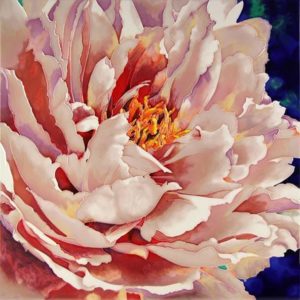
Nature is another important inspiration of Guo’s paintings. Guo traveled all thirty-four provinces in China and reproduced many sceneries from those trips. Guo also earned renown in public arts with his large-scale Sancai murals such as the 243 feet long “Kaleidoscope” at the National Convention & Exhibitions Center Station in Shanghai, and the 4306 square feet “China Totem” at Luoyang Normal University Library. Guo currently serves as the director of Sancai Art Museum of China which consists of the world’s largest collection of contemporary Sancai art. As a pioneer in using art to overcome poverty and save ecology in rural China, his latest project including the nearly 500 acres Luoyang International Ceramic Art Village. In 2015, Guo founded “Dangri (Today) Exhibition”, an annual art and charity event that raise fund for youth art education in rural China, six classrooms were established in the past three years.

